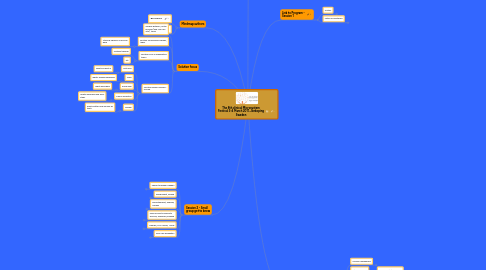
1. Link to Program - Session 1
1.1. History
1.1.1. New node
1.1.2. Slide
1.2. Future of healthcare
1.2.1. slide
1.2.2. slide
1.2.3. Read: Value by design
1.2.4. Slides by Göran Henriks, http://bit.ly/hW2wVm
1.2.5. slide
1.2.6. slide
1.2.7. slide
2. Context
2.1. Productivity - more ?
2.2. Creativity - more soul
3. Mindmap authors
3.1. @sarariggare
3.2. @paulderoos
4. Session 2 - Small group get to know
4.1. PRoject manager Sweden
4.1.1. changing work in healthcare
4.1.2. Better life for old people in need of health care and social care
4.1.3. Swedish palliative register 2010
4.1.4. Therese . lindman @ skl.se
4.1.5. www.senioralert.se
4.1.6. www.palliative.se
4.2. Psychologist, Finland
4.2.1. LIITTYVA VOIMA COllaborative intensity
4.2.2. New node
4.3. Physiotherapist, Andreas, Norway
4.3.1. back pain, hospital work
4.4. HEad of adult community services, Wakefield, England
4.4.1. 140.000 people living
4.4.2. going through a reorganisations
4.4.3. vertical integration of the primary care and hospital care
4.4.4. www.liittyvavoimia.fi
4.5. Sweden, Mrs. Lamark, Nurse
4.5.1. Working in staff, in area of skin/ear/eye infections
4.5.2. Trying to make improvements, help leaders in different clinics measure outcomes of work
4.5.3. struggle with managerial problems: top-down vs botom up
4.6. from ITaly delegation
4.6.1. Expert users and damily members in mental health services
4.6.2. www.fareassieme.it
4.6.3. Areas
4.6.3.1. Menthal health center
4.6.3.1.1. reception at the front office and call center accompaniment in crisis situation participation in community treatment team
4.6.3.2. hospital ward
4.6.3.2.1. presence and accompaniment in crisissituations
4.6.3.3. housing
4.6.3.3.1. night and day shift at the sun house, a residential facility that accomodates people with severe mental disorders
4.6.3.4. care pathways
4.6.3.5. awareness campaign
4.6.3.6. families
4.6.3.7. quality
5. The concept of Esther Coaches - Education and active networking - A success story from Eksjo
5.1. Nicoline Wackerberg
5.1.1. Physical therapy
5.1.2. Quality manager in Esther network since 2006
5.1.3. Same job, different people paying
5.2. Esther Coaching
5.2.1. Coaching started in 2006
5.2.1.1. Esther Coaches Step 1
5.2.1.2. Esther Coaches Step 2
5.2.1.2.1. goes out to different organisations
5.2.1.3. Keypoints
5.2.1.3.1. Patient focus
5.2.1.3.2. Learn of others
5.2.1.3.3. Cooperation, multiprofessional
5.2.1.3.4. structure in improvement
5.2.1.4. Training
5.2.1.4.1. 6 days
5.2.1.4.2. Learning by doing
5.2.1.4.3. MAking their own personal improvement project
5.2.1.4.4. making an improvement at work
5.2.1.4.5. coaching skills - conversations topics
5.2.1.4.6. site visits in other organisations in and outside healthcare
5.2.1.4.7. solution based coaching
5.2.1.5. "coach contract"
5.2.1.5.1. Agreement between leadership and coach
5.3. Esther network - "No matter where, we will be there!" -- tagline
5.3.1. Stand in the shoes of another in healthcare, one day a year
5.3.1.1. how is it to be a social worker
5.3.1.2. how is it to be an occupational therapist
5.3.2. We are good in process mapping
5.3.3. Started in 1997
5.3.3.1. we moved much forward since then
5.3.3.2. we are not there.
5.3.4. VISION
5.3.4.1. creating a durable and neergetic network results that Esther can feel confident and independent
5.3.4.2. Esther
5.3.4.2.1. knows where to turn to
5.3.4.2.2. gets care in or close to her home
5.3.4.2.3. See us as the same provider of care
5.3.4.2.4. has the same possibilities to get care all over the region
5.3.4.3. Always stories
5.3.4.3.1. Esther met 32 people
5.3.4.3.2. attach process mapping to stories
5.3.4.3.3. thinking LEAN, yet putting the person central
5.3.4.4. When funding was gone
5.3.4.4.1. shaped network
5.3.4.5. Esther is a name
5.3.4.5.1. it's a symbol
5.3.4.5.2. a symbol for the patient that needs several caregivers
5.3.5. Hoglandet
5.3.5.1. Hospital Eksjo - Nassjo
5.3.5.2. Referrals prefer to send patients there
5.3.5.3. 110.000 inhabitants
5.3.5.4. 7 municipalities
5.3.5.5. 7 primary care regions
5.3.5.6. One hospital
5.3.6. Esther network = 3 jobs
5.3.6.1. Do your job
5.3.6.2. Improve it
5.3.6.3. Spread it
5.3.7. Changes
5.3.7.1. Who's in the room
5.3.7.1.1. Politicians
5.3.7.1.2. patients
5.3.7.1.3. Carers
5.3.7.1.4. Healthcare professionals
5.3.7.2. optimising use of the network
5.3.7.3. Basic idea
5.3.7.3.1. we want
5.3.7.3.2. we can
5.3.7.3.3. we have the guts
5.3.7.3.4. managing with all you have
5.3.7.4. improvement work
5.3.7.4.1. Our colleagues understand now how we contribute to improvement
5.3.7.5. Literature
5.3.7.5.1. Flaherty J. Coaching: Evoking excellence in others. 3rd edition. Butterworth-Heinemann,2010, s 2-3
5.3.7.5.2. Szabo P Meier D Coaching: Plain & simple. 2009, s 7
5.4. SEssion participants
5.4.1. psychologists
5.4.2. nurses
5.4.3. coaches
5.4.4. educators
5.4.5. management / directors
5.5. Presentations 2010
5.5.1. http://www.lj.se/info_files/infosida35103/a3_wackerberg_svensson.pdf
5.5.2. http://www.lj.se/info_files/infosida35103/a3_hibbs.pdf
6. Solution focus
6.1. Gregory Bateson, Milton Erickson (and MRI Palo Alto), 1950s
6.2. Solution Focus Based Therapy, 1980s
6.2.1. Steve de Shazer & Insoo Kim Berg
6.3. Solution focus in organisation 1990's
6.3.1. systems thinking
6.3.2. etc
6.4. Solution Based coaching - OSKAR
6.4.1. Outcome
6.4.1.1. What you want is
6.4.2. Scale
6.4.2.1. what's already happening
6.4.3. Know-how
6.4.3.1. What works here
6.4.4. Affirm and action
6.4.4.1. Whats impressed and small steps
6.4.5. Review
6.4.5.1. what's better. how did you do that?
